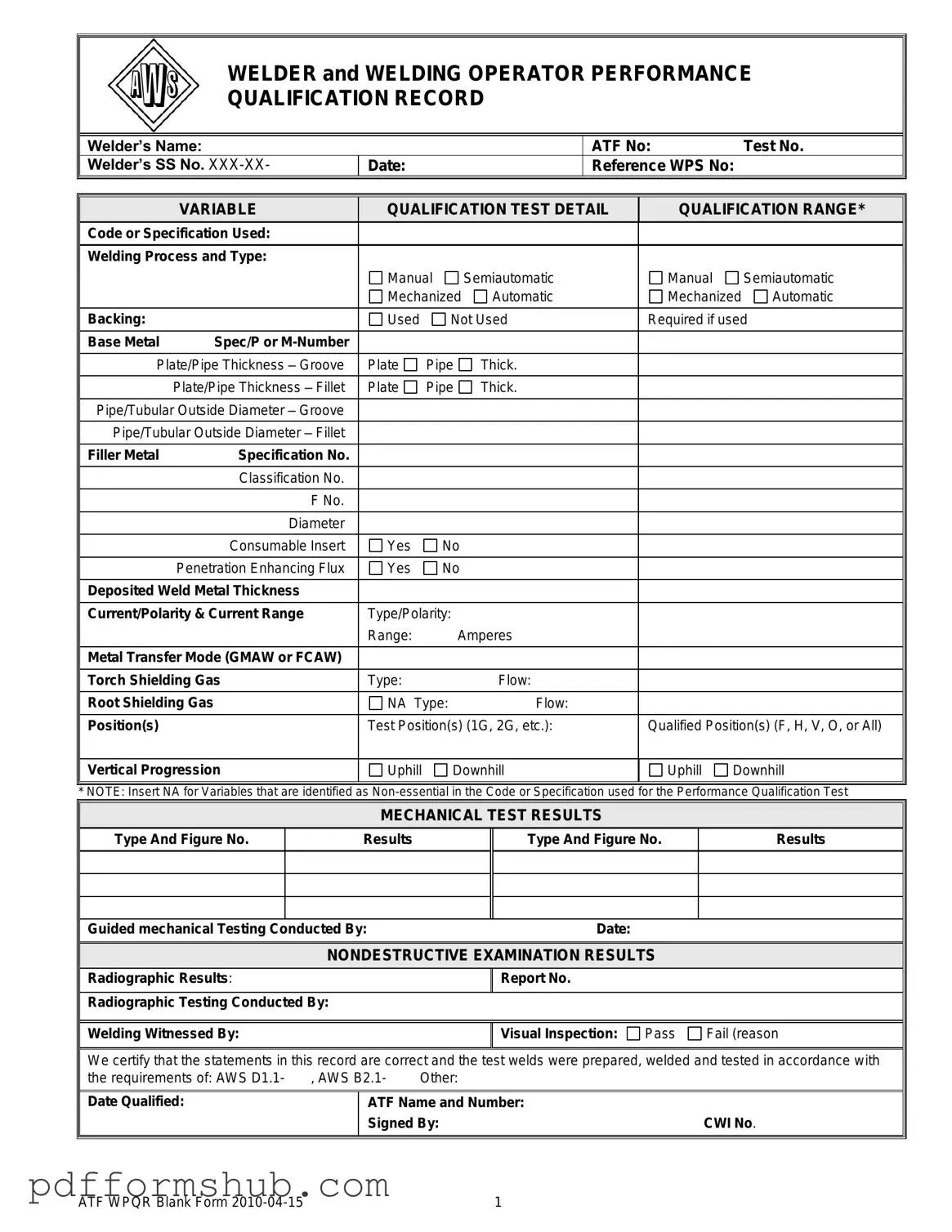The Welder Performance Qualification Record form is a vital document used to assess and certify the skills of welders and welding operators. This form captures essential information about the welder, including their name, identification numbers, and the specific test conducted. It outlines the details of the qualification test, referencing the Welding Procedure Specification (WPS) that guides the welding process. Key variables such as the type of welding process—whether manual, semiautomatic, mechanized, or automatic—are meticulously recorded. Additionally, the form details the materials involved, including base metal specifications, filler metal classifications, and the thickness of the materials being welded. It also includes important parameters like the current settings, shielding gas types, and the positions in which the welding was performed. Mechanical test results, including any non-destructive examination outcomes, are documented to provide a comprehensive overview of the welder's capabilities. Ultimately, this record serves as a formal verification that the welder has met the necessary standards, ensuring that they are qualified to perform welding tasks safely and effectively.
